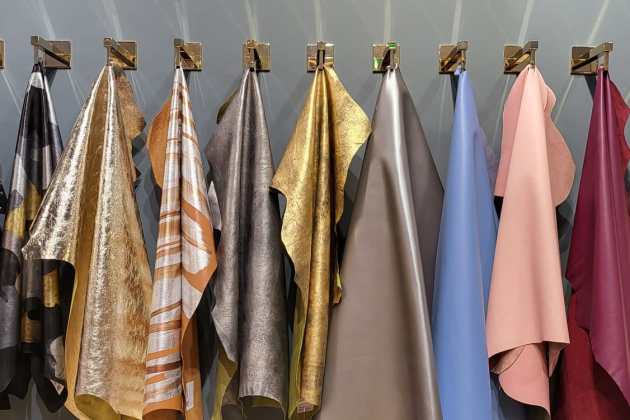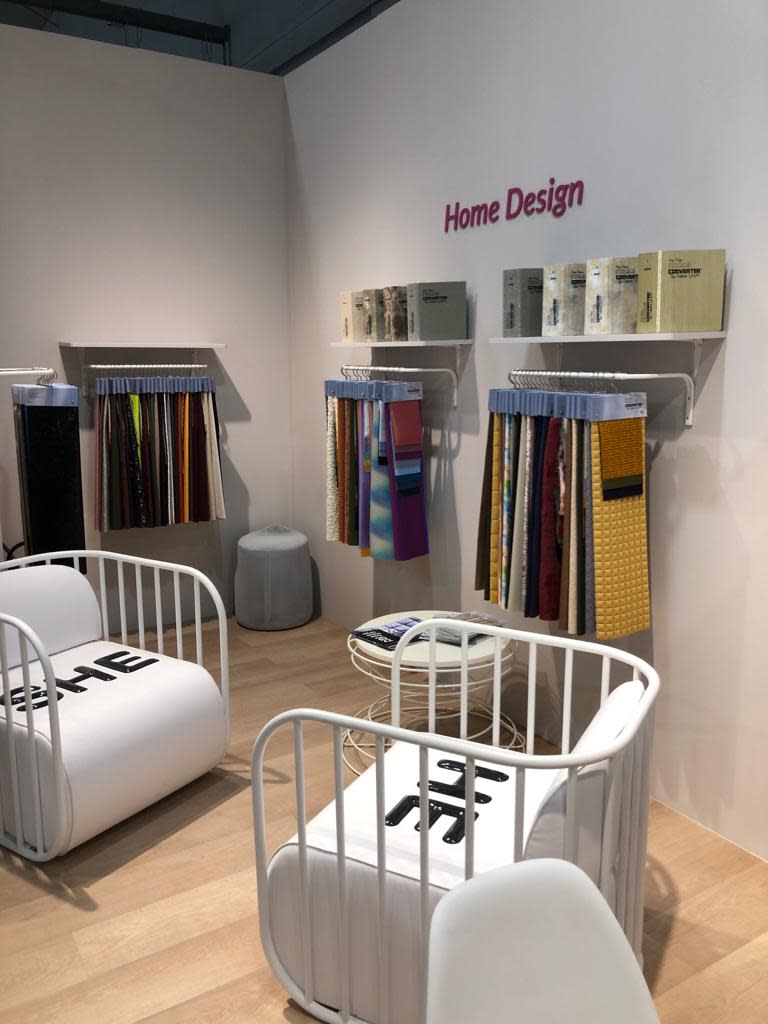Sustainability a Hot Topic at Lineapelle

MILAN — Building strong connections and a focus on a new industrial culture drove the three-day leather trade show Lineapelle.
With more than 1,100 exhibitors, compared with 725 in the September edition last year, the show ended with an optimistic mood. Lineapelle attracted more than 16,000 visitors, 47 percent up compared with last September, with visitors from the U.S., India, Mexico and Turkey, but also France, the United Kingdom, Portugal and Spain.
More from WWD
A driving force of this restart was the simultaneous presence of other fairs connected to the fashion industry like Micam, the footwear trade show, and Mipel, the bags and accessories exhibition. Lineapelle closed Sept. 22.,
That was the best way to celebrate the 100th edition of Lineapelle, according to chief executive officer Fulvia Bacchi, who said buyers did not attend only to get a sense of the trends but also to find partners. This goes hand in hand with the industry reporting an increase of 3.7 percent in production volume and 11.2 percent in turnover during the first six months of the year, compared to the corresponding period last year.
Having a number of fairs taking place at the same time was a key factor also for Chiara Mastrotto, president of Gruppo Mastrotto, as they attract foreign visitors. “The U.S. market held up well, while Japan and Korea showed good signs of a restart,” she said. “The European market is always vital to our business, even if it is severely affected by the geopolitical situation, particularly in the mass market sector.”
The company, which has sales of 330 million euros, featured a fall-winter 2023-2024 collection focused on the duo leather and technology, following a path started years ago to reach a more sustainable production.
At the heart of this work was “Reviva,” a patent-pending material born out of leather processing waste. “We are aiming at a real circular economy that allows us to use each single piece of our materials,” Mastrotto added. “Reviva is also extremely flexible and can be customized to meet all of our high-end fashion clients.”
Gruppo Mastrotto is fairly balanced in terms of business areas. “We gave shape to an industrial plan based on a business diversification to reduce our industrial risks,” the president explained. Accordingly, the company is present in major international markets and sells to sectors ranging from shoes to furniture.
Considering the current geopolitical situation and the latest Italian general elections, Mastrotto said that a crucial point to be seriously approached should be energy investments and a strong commitment to find a solution to the energy crisis.
Costantino Karazissis, founder and CEO of Italian Converter, agreed. “Increased costs may weaken the market in the most serious way,” he said.
Exports account for 40 percent of Italian Converter’s sales. “Our core markets are in Europe, with France at the forefront followed by the United Kingdom” and Italy. Karazissis explained that “this is due to our kind of customers, which are mainly positioned in the high-end range.”
The core business of the company, which is based near Pavia, Italy, is the footwear market, but now the management is planning to expand into other sectors, starting with furniture and then apparel. During Milan Design Week in June, Italian Converter showcased a line in partnership with architect Simone Micheli.

Sustainability is another issue Karazissis feels strongly about. The goal is to reach a sustainable production “for real,” as he underscored, which means going slow but sure to convert all industrial processes and materials.
“We use bottle-recycled polyester, organic cotton and natural fibers which are all biodegradable, but it is not that easy to meet partners who share our same vision, as a real sustainable process means investments.”
With this in mind, Italian Converter will shortly sign an agreement with ItalConcia in Tuscany to produce material made of a mix of leather called Bio Based Lather and fabric, establishing a circular economy process.
The key to change this situation lies also in a new industrial culture, which involves professional training, too. During Lineapelle there were students from Milanese schools, while the Mipel Lab area hosted the partnership between Assopellettieri and Aslam, an institute that offers a range of courses including training in the leather industry.
“Qualified labor is getting hard to find and we want to buck this trend by investing in professional training,” confirmed Franco Gabbrielli, president of Mipel Lab. “We have to work to create a cultural revolution and let the youngest understand that an artisan’s craft work is as creative and noble as a designer’s.”
Mipel Lab gathered 13 Italian companies from the industry. “We want to expand our influence abroad, especially in the U.S., where we are looking for new partnerships,” Gabbrielli added.
In sync with this strategy is the partnership with Impersive, a company that specializes in augmented reality, showing at accessories show Mipel. Through the use of a 3D Oculus, visitors could find themselves in the leather production process, enabling them to better understand the combination of technology and handcraft.
“Our sector boasts salaries which are often higher than the country’s average, it is our duty to study a better communication and present ourselves as a system,” said Stefano Giacomelli, CEO of Tivoli Group, one of the Mipel Lab companies. Giacomelli added that the next step for Mipel Lab should be to develop close relationships with the main international fashion associations, starting with focusing on the U.S. and France.
Regarding Tivoli, its CEO underscored how important the North American market is for the group, while Europe has showed signs of a revival in the last few months. “We are now working with an increasing number of international contemporary brands: we represent the Made in Italy branch for them.” After a difficult 2020, the Tuscan company saw a slight growth in turnover, reaching 52 million euros.
Antonio Quirici, president of Consorzio Cuoio di Toscana, the Tuscan cowhide consortium, said: “We are betting on a circular, sustainable production and on collaboration with young designers, to raise awareness about our industrial sector among the new generations.” Quirici is also president of the Bonistalli & Stefanelli tannery.
The consortium supported emerging brands Act N.1 and Cormio during the September Milan Fashion Week by supplying the companies with vegetable tanned sole leather free of charge. The goal is to go further along this path, from the next Milan Fashion Week to Pitti Uomo, in Florence. Quirici confirmed that in the first six months of the year Europe, North America and Asia were the markets recovering best, while high-end customers represent most of its companies’ business, including brands like Chanel, Dior and Ferragamo.
Signs of a market recovery also were seen by Tuscan Conceria Superior, 43.65 percent of whose share capital has just been acquired by Prada Group. “We can be optimistic but keeping in mind that autumn will be crucial,” said creative director Massimiliano Schiavini, although an “air of uncertainty” is reigning because of increasing costs and the geopolitical situation. “December and January will be key months and after that we will be able to understand if the global market is recovering for real.”

